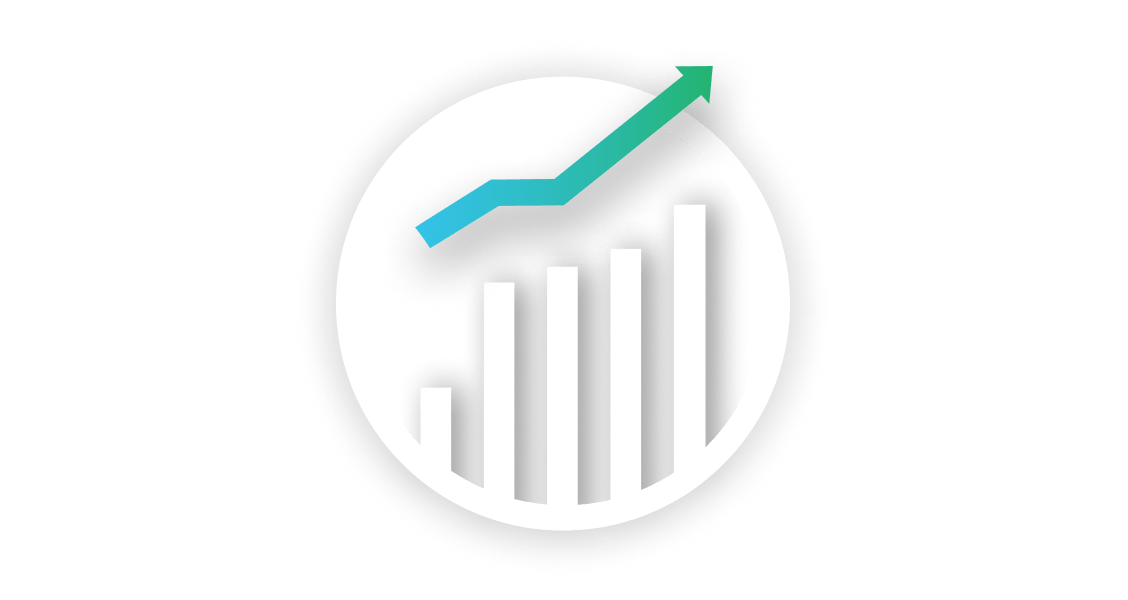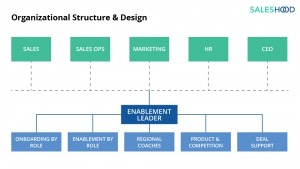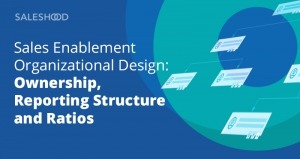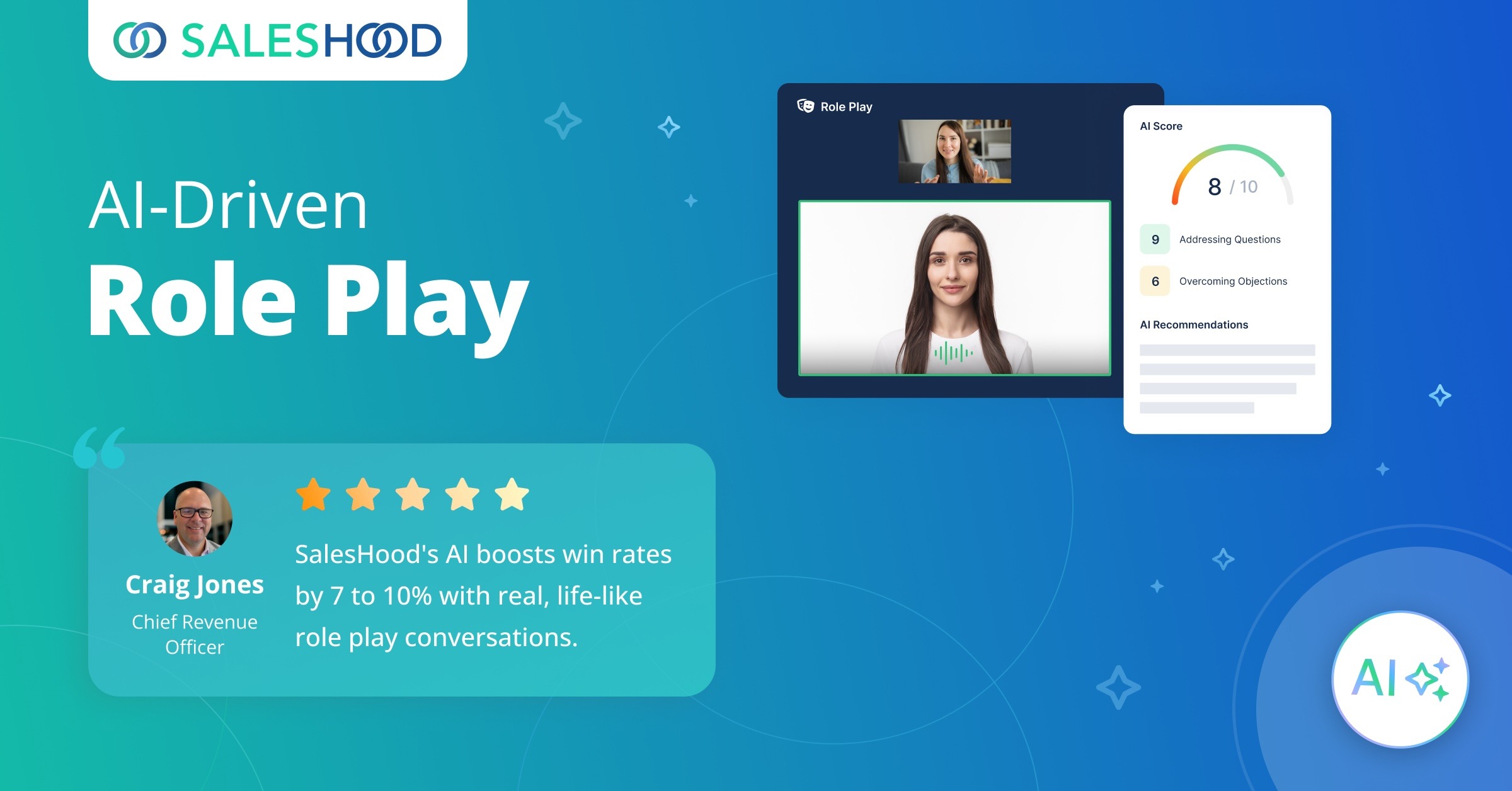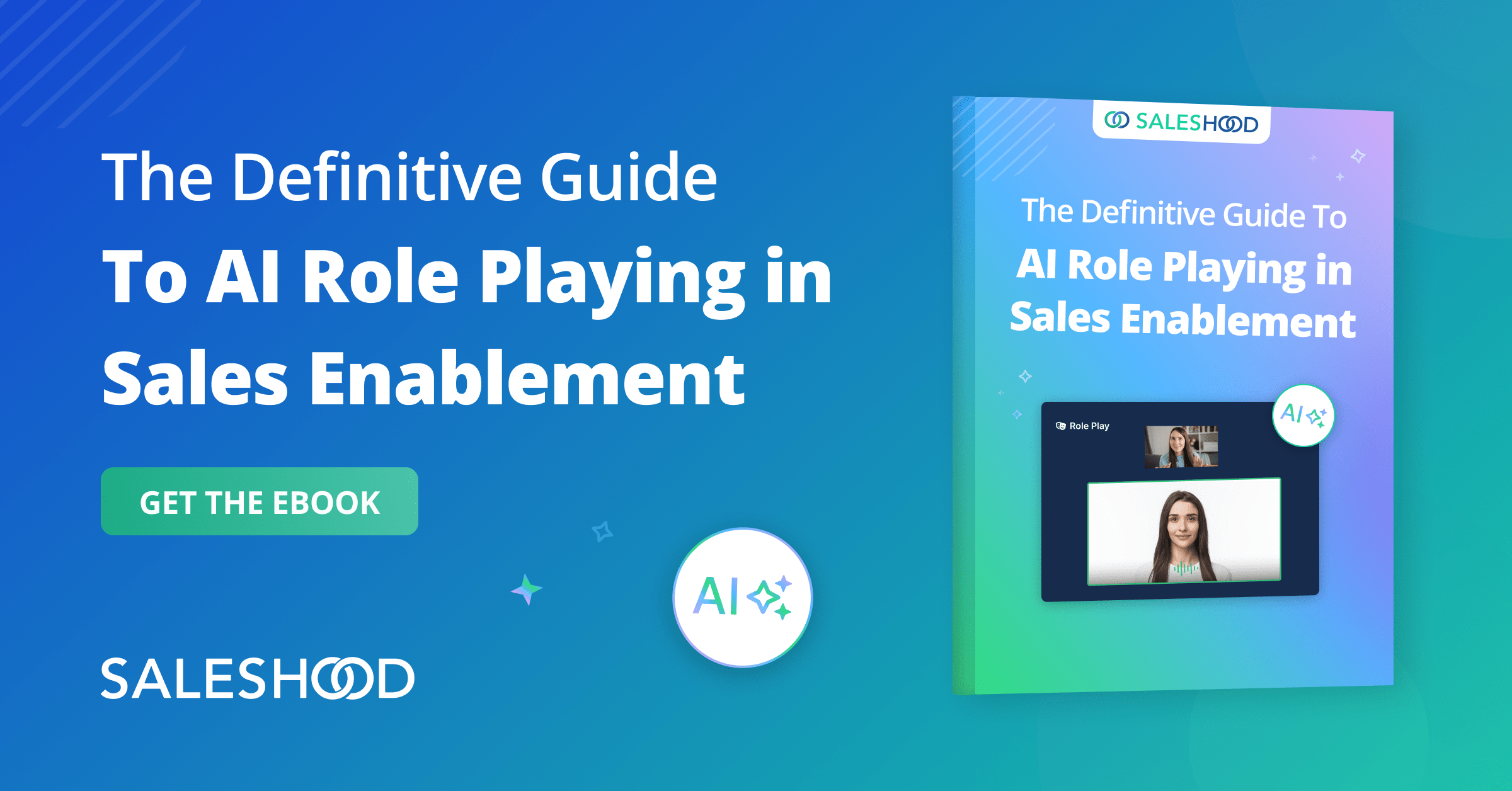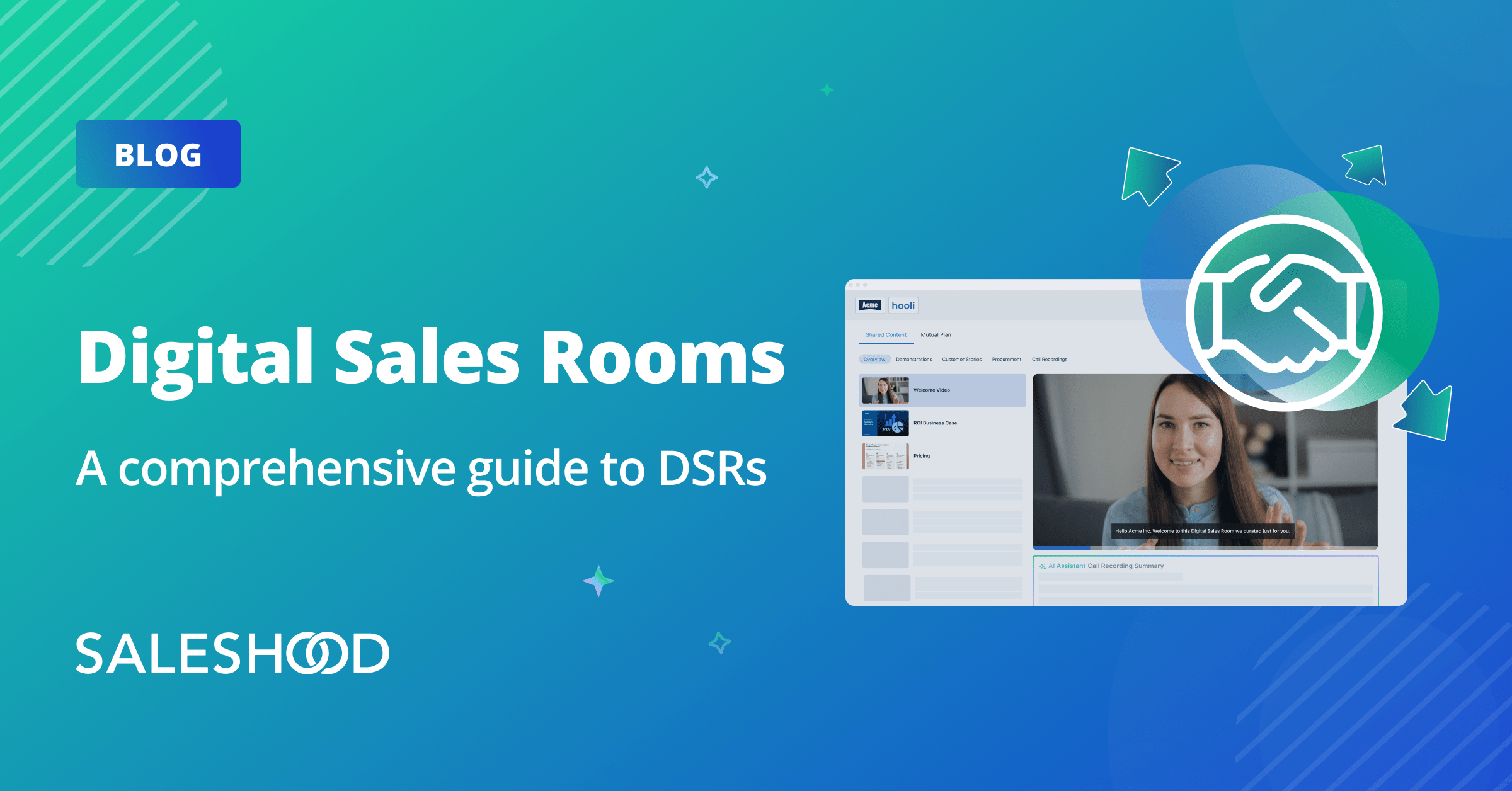“The essence of Sales Enablement is to help companies grow their business faster by aligning their people, processes, and priorities.”
-Elay Cohen, CEO and Co-Founder of SalesHood
Sales enablement continues to evolve and mature rapidly. The pandemic has changed the way we sell forever—organizations are forced to make drastic changes to their sales enablement programs, focusing on virtual enablement and virtual selling. Having a sales enablement program is no longer an option. It’s a must-have business imperative. When you can unlock the power of sales enablement through an optimized sales enablement strategy that includes onboarding and new hire training, modeling, pitch practice, and feedback–something really magical happens. All of your revenue teams are aligned with the same messaging, same pitch, and the same strategy–it’s a beautiful thing.
|
In this sales enablement guide you’ll learn about the strategies, benefits and best practices to follow to improve win-rates, sales cycles time and sales productivity. |
Here’s a 17 minute audio summary of the guide. Audio Player |
Definition: What is Sales Enablement?Sales enablement is the strategic process of empowering sales teams with the knowledge, tools, and content they need to sell effectively and consistently. It’s about creating alignment across your go-to-market teams—marketing, sales, and customer success—ensuring every buyer interaction is impactful and every seller is equipped to win. Sales enablement drives measurable outcomes, including higher win rates, shorter sales cycles, and improved quota attainment. By leveraging technology, coaching, and just-in-time content delivery, it transforms how sales teams work, enabling them to sell better, sell faster, and deliver exceptional value to buyers. The ultimate goal is to create predictable, scalable revenue growth while building stronger customer relationships. |
Sales enablement is important because it facilitates better use of resources across all areas of the business and aligns the sales and marketing teams. It uses a cohesive strategy for companies to increase win rates and better utilize the sales process. Read more about why sales enablement matters here.
Interested in taking a free Sales Enablement Mastery course, sign up here to start learning today.
Why Sales Enablement Matters: Key Benefits for Organizations
Sales enablement can transform how your revenue teams operate—if it’s implemented thoughtfully and reinforced consistently. Below are seven proven ways that sales enablement drives measurable impact across organizations.
1. Faster Ramp Time for New Sales Hires
Sales enablement accelerates onboarding, helping new reps become productive faster. Case study after case study shows that companies using enablement platforms reduce time to ramp and hit quota more quickly—all in a fully virtual environment. Traditional in-person bootcamps are no longer feasible for many teams. Sales enablement platforms provide scalable, virtual onboarding experiences that engage reps from day one—no flights required.
Watch the video to learn the guiding principles of new hire sales onboarding. Download the Essential Guide to Sales Onboarding.
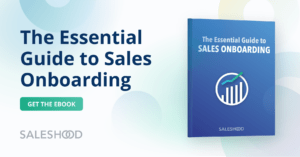 |
Case Study: Virtual Sales Onboarding in ActionLindsey Morga, Revenue Enablement Manager, shares how her team pivoted to a 100% remote onboarding program overnight—and saw faster time to productivity as a result. Her insights are a must-read for companies modernizing their ramp process. |
2. Stronger Sales and Marketing Alignment
When sales enablement becomes a company-wide priority, alignment between sales and marketing improves dramatically. Content creation becomes more intentional, communication flows more easily, and sales productivity increases.
Instead of finger-pointing—marketing wondering why content isn’t used, and sales complaining about irrelevant assets—teams collaborate around shared goals: consistent messaging, customer experience, and revenue growth.
Read more: Sales and Marketing Alignment with Sales Enablement blog.
3. More Effective Sales Content
|
A unified go-to-market strategy means every employee, especially every seller, can clearly answer: What does your company do—and why does it matter? For sales reps, content effectiveness hinges on being able to confidently pitch, personalize, and deliver value. Sales enablement ensures the pitch is practiced, relevant, and aligned with the buyer’s needs at every stage. Download the guiding principles for Sales Content Management. |
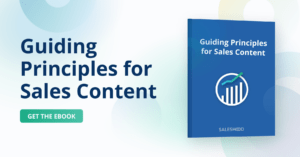 |
4. Messaging Alignment at Scale
Consistent messaging doesn’t happen by accident—it’s the result of structured collaboration, feedback loops, and regular practice. Sales enablement platforms like SalesHood make peer-to-peer learning easy, encouraging reps to practice pitches, share insights, and improve together.
Explore blog: How to Turn Sales Pitches into Meaningful Conversations
🎥 Watch video down below: How to Use Generative AI to Scale Pitch Practice
The key question Copado faced was how to use AI to be more efficient and deliver what their field needs when they need it. They wanted to move from passive learning, such as watching videos and reviewing slide decks, to active participation where reps could practice skills and get instant feedback.
With SalesHood’s AI Coach, Copado’s reps can now practice and get feedback in minutes, rather than waiting days for manager input. This has fundamentally shifted their approach to enablement, allowing for smaller, bite-sized learning spread out over time. Reps find it easier to consume and actively engage, instead of just reading or zoning out during a video. Watch the short two highlights video or click to watch the full interview.
5. Top Seller Behavior Modeling
Replicating top performers is one of the fastest paths to improving team-wide results—but only if done right.
Sales enablement platforms spotlight what top sellers are doing, so others can adopt those habits. Through curated examples, coaching, and structured practice, teams scale what works—faster.
Enablement connects the dots between behavior and outcomes, making professional development ongoing, actionable, and performance-driven.
6. Shorter Sales Cycles
Sales enablement reduces wasted time and increases deal velocity. When sellers have easy access to the right messaging, content, and training, they focus less on admin and more on delivering value to buyers.
As a result:
-
Sellers tailor outreach more effectively
-
Buyers move through the funnel faster
-
Teams close more deals, more efficiently
With real-time analytics and AI insights, sales leaders can identify what’s working, optimize continuously, and drive predictable growth.
7. Stronger Sales Process Adoption
Great enablement doesn’t just teach what to do—it reinforces how to do it consistently.
A defined sales process outlines key actions like:
-
Conducting thorough discovery
-
Building a mutual action plan
-
Securing executive sponsorship
Sales enablement ensures these behaviors stick by connecting process to purpose. And with modern AI, platforms now guide reps in real time. For example:
-
After a discovery call, suggest updating the mutual action plan
-
When a deal hits proposal stage, prompt a tailored content pack
-
Before close, recommend engaging customer success
This kind of just-in-time coaching drives process adoption naturally, reducing friction while increasing results.
The impact of sales enablement isn’t just theoretical—it’s measurable. From faster ramp and higher win rates to better alignment and shorter sales cycles, organizations that invest in enablement are better equipped to compete and grow.
Sales Enablement Challenges Sales Leaders Face
Today’s sales leaders are under immense pressure to meet aggressive growth targets. Yet, fewer than 25% of sellers are hitting quota. This isn’t just a performance gap—it’s a signal of deeper, structural issues that undermine execution, alignment, and efficiency across the go-to-market organization.
Sales enablement exists to solve these challenges, but many companies are still struggling to build the right foundation. Let’s break down the key barriers holding teams back:
1. Sales Execution ChallengesInconsistent sales processes are one of the biggest threats to performance. Without a standardized, repeatable approach, it’s difficult to scale what works—and easy to lose deals due to missed steps or misaligned messaging. The complexity of B2B buying compounds the issue: today’s decisions involve more stakeholders, longer cycles, and higher buyer expectations. Sales teams need clear, guided frameworks that help them navigate this complexity, stay aligned with the buyer journey, and execute with consistency and confidence. 2. Marketing Content Effectiveness ChallengesContent is a critical driver of sales success—but only when it’s easy to find, relevant, and aligned with buyer needs. Unfortunately, many reps spend too much time searching for assets, customizing outdated decks, or creating their own materials from scratch. The result? Wasted time, inconsistent messaging, and missed opportunities to add value in buyer conversations. Misalignment between marketing and sales not only slows deals—it erodes trust. To drive engagement, teams need a seamless, integrated approach to content delivery and usage. 3. Revenue Operations & Efficiency ChallengesModern sales orgs are often weighed down by bloated, disconnected tech stacks that hinder more than they help. Sellers are forced to toggle between tools instead of focusing on selling. And while companies invest heavily in onboarding, they often neglect reinforcement—leading to a massive drop-off in knowledge retention. In fact, reps forget up to 87% of what they learn within a month without continuous enablement. To drive long-term impact, companies need streamlined systems, efficient workflows, and always-on training that keeps reps sharp and productive. |
 |
These aren’t isolated problems—they’re symptoms of a bigger need for a connected, data-driven sales enablement strategy. In the next section, we’ll explore how leading organizations are overcoming these barriers and building high-performing, scalable sales teams.
When You Should Implement Sales Enablement?
The short answer: as early as possible.
Sales enablement isn’t something that should wait until you’re scaling. In fact, companies that bake sales enablement into their growth strategy from the beginning often see stronger performance, faster ramp times, and more consistent revenue outcomes.
Even if you don’t yet have a formal sales enablement function or dedicated headcount, you can—and should—begin building the foundation. This might mean assigning sales enablement responsibilities to a team member in sales, marketing, or operations as a part-time focus. Over time, as your organization grows, that role can evolve into a full-time function, supported by tools, training, and strategy.
Why start early?
-
Efficiency scales: Establishing repeatable onboarding, training, and content delivery processes early makes it easier to scale your sales team.
-
Data drives growth: Initial efforts in enablement generate valuable data on what’s working—insights that can inform everything from hiring to messaging.
-
The competitive edge: In today’s fast-paced landscape, where buyers are more informed and content is abundant, sellers need the right resources at the right time to stay competitive.
-
Enablement is a growth engine: It’s not just support—it’s a strategic lever that directly impacts revenue, productivity, and buyer experience.
Bottom line: If you’re serious about building a sustainable, high-performing sales organization, start integrating sales enablement practices early—even before the title “Sales Enablement” exists on your org chart.
The Five Guiding Principles of Sales Enablement
As sales enablement continues to evolve, organizations must embrace a modern approach that aligns with how buyers purchase, how sellers engage, and how revenue teams operate.
Here are five key principles shaping sales enablement:
|
Buyer-Centric |
Sales enablement should be anchored in the buyer’s journey. Every training, piece of content, and tool must align with how buyers research, evaluate, and make decisions—empowering sellers to deliver timely, relevant value at every stage of the deal. |
|
|
|
|
Data-Driven |
High-performing enablement strategies rely on data. By using real-time performance metrics and buyer engagement insights, teams can optimize coaching, personalize outreach, and continuously refine messaging to improve outcomes and drive predictable revenue. |
|
Just-in-Time |
Learning shouldn’t stop after onboarding. Modern enablement delivers personalized, AI-powered coaching and content in the flow of work—equipping sellers with the right knowledge exactly when they need it to succeed in the moment. |
|
|
|
|
Go-To-Market (GTM) Aligned |
Sales, marketing, and customer success must operate as one cohesive team. Enablement ensures cross-functional alignment by making content relevant, accessible, and actionable—so sellers can easily engage buyers with consistent messaging across the entire journey. |
|
|
|
|
Seller-Friendly |
Technology should support sellers, not slow them down. Enablement tools must be intuitive, embedded into daily workflows, and designed to simplify execution—making it easier for reps to focus on what matters most: building relationships and closing deals. |
By adopting these sales enablement guiding principles, companies will build a scalable, high-impact sales strategy that drives revenue and accelerates deal cycles.
Modern Sales Enablement: Just-in-Time, Adaptive, and AI-Driven
Successful sales enablement strategies are tailored to your team’s specific needs and help provide the team with the sales enablement tools they need to increase effective sales. In contrast to a sales onboarding process, or training and coaching alone, an effective implementation process is ongoing, rather than yearly or intermittent. An effective sales enablement process examines and analyzes all the resources available to sales to ensure that it efficiently and effectively helps sales reps drive successful deals and convert leads into customers.
Watch this video by Elay Cohen to better understand what modern sales enablement looks like. It’s a best practice to map enablement across the entire sales process and customer journey.
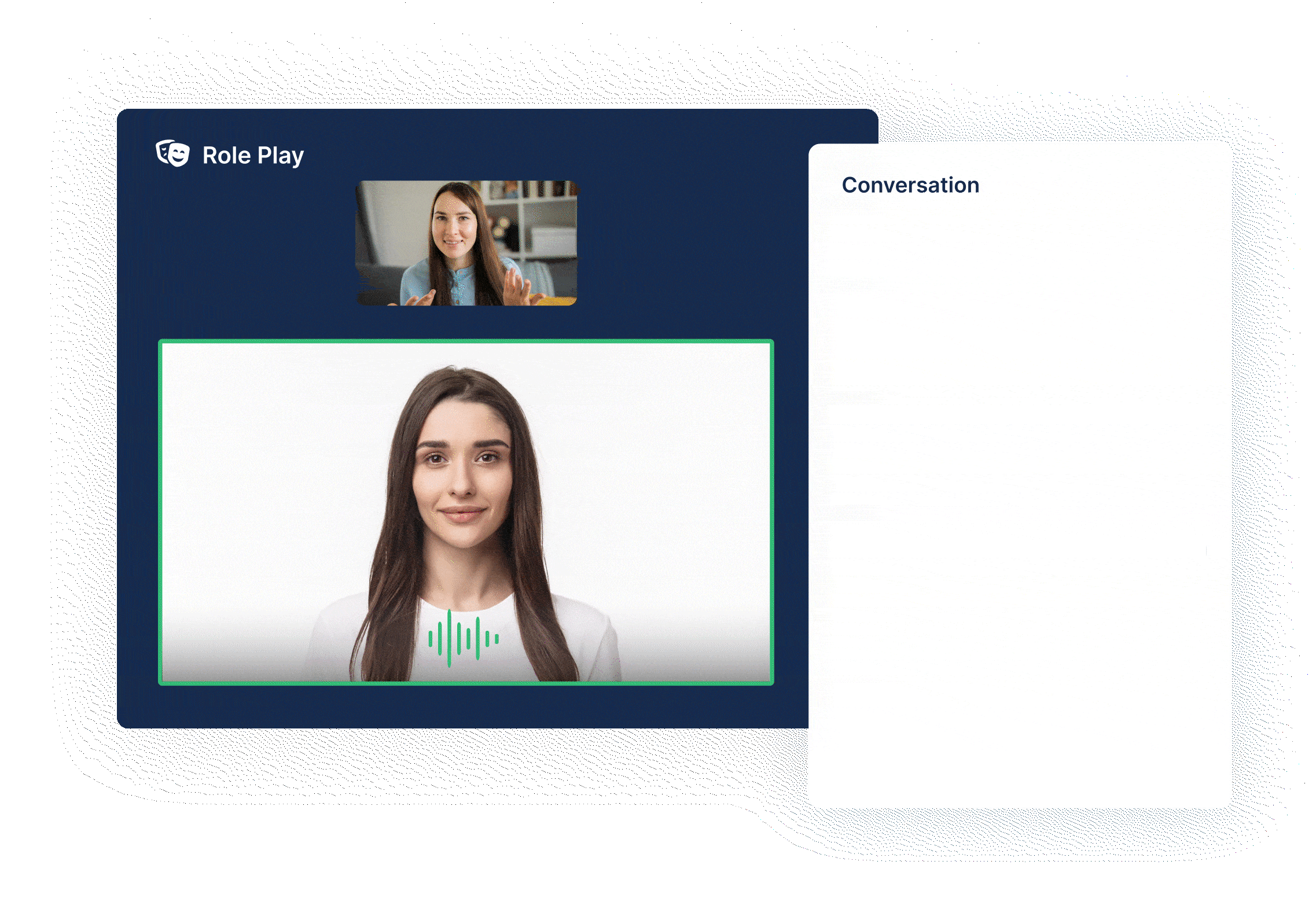 |
How to Measure Sales Enablement Impact?
| To scale high-impact sales enablement, activity and business impact need to be measured from benchmarking to performance correlation. Measuring the impact of sales enablement involves evaluating its influence on key performance indicators (KPIs) that align with your organization’s goals. Here are some effective ways to measure sales enablement’s success: | 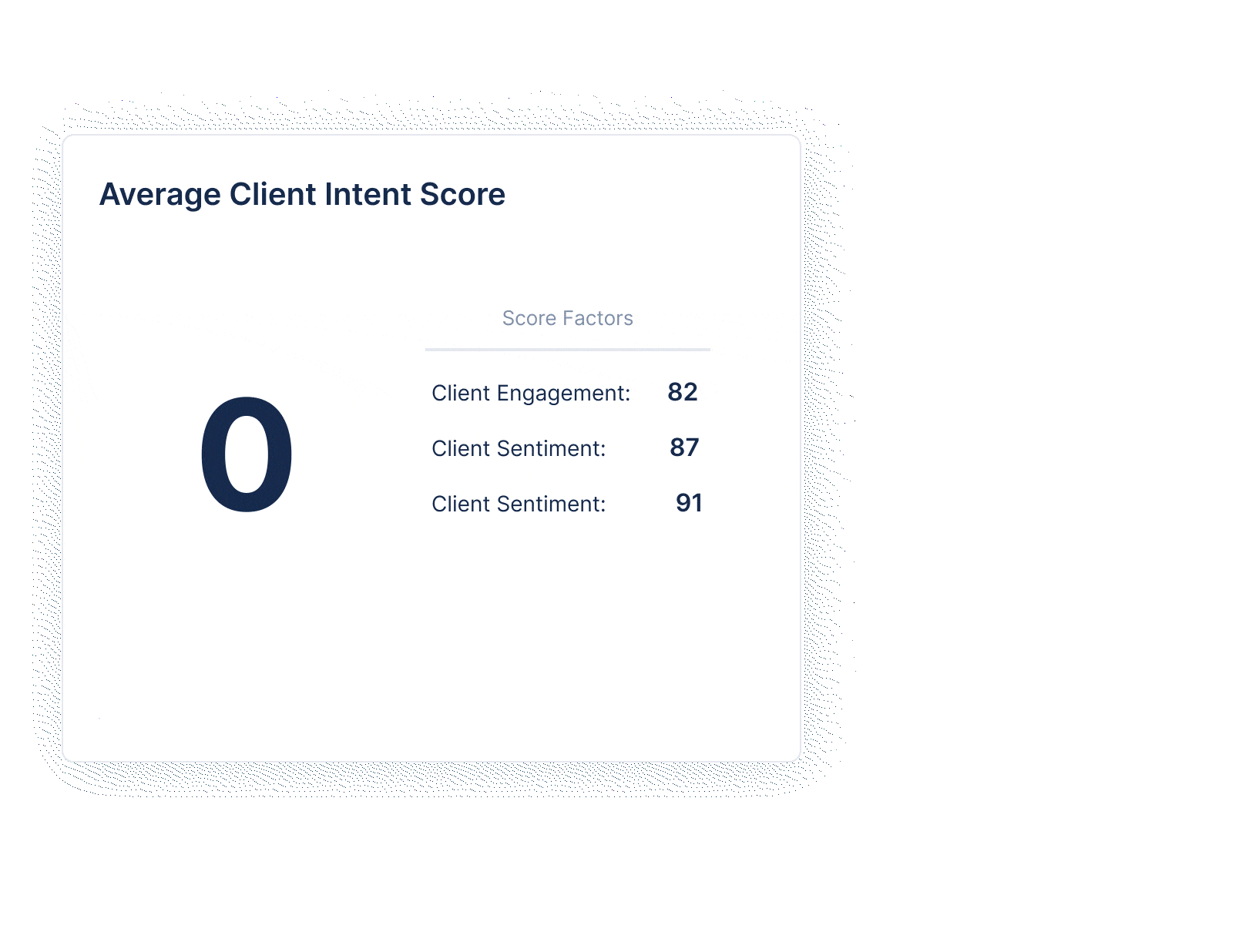 |
1. Sales Productivity Metrics
- Time to Quota Attainment: Measure how quickly new hires reach full productivity. A decrease in ramp-up time indicates effective onboarding and training.
- Selling Time vs. Admin Time: Analyze how much time reps spend on actual selling activities versus administrative tasks. Sales enablement should streamline processes to maximize selling time.
2. Revenue Metrics
- Quota Attainment Rates: Track the percentage of reps consistently meeting or exceeding quota. Higher attainment rates signal effective enablement.
- Average Deal Size: Monitor changes in deal size to evaluate if enablement efforts improve reps’ ability to position value and close larger deals.
3. Sales Cycle Efficiency
- Sales Cycle Length: Assess whether enablement tools and training shorten the time it takes to close deals.
- Conversion Rates: Track lead-to-opportunity and opportunity-to-close rates to determine if enablement efforts help reps engage and advance deals effectively.
4. Content Effectiveness
- Content Usage Analytics: Measure how often sales content is accessed and used by reps during the sales process.
- Content ROI: Evaluate the impact of content on deal progression, such as how often buyers engage with specific materials and whether they lead to conversions.
5. Training and Coaching Outcomes
- Knowledge Retention Scores: Use assessments to gauge reps’ understanding and application of enablement training.
- Behavioral Changes: Observe whether reps adopt best practices and apply skills learned during training.
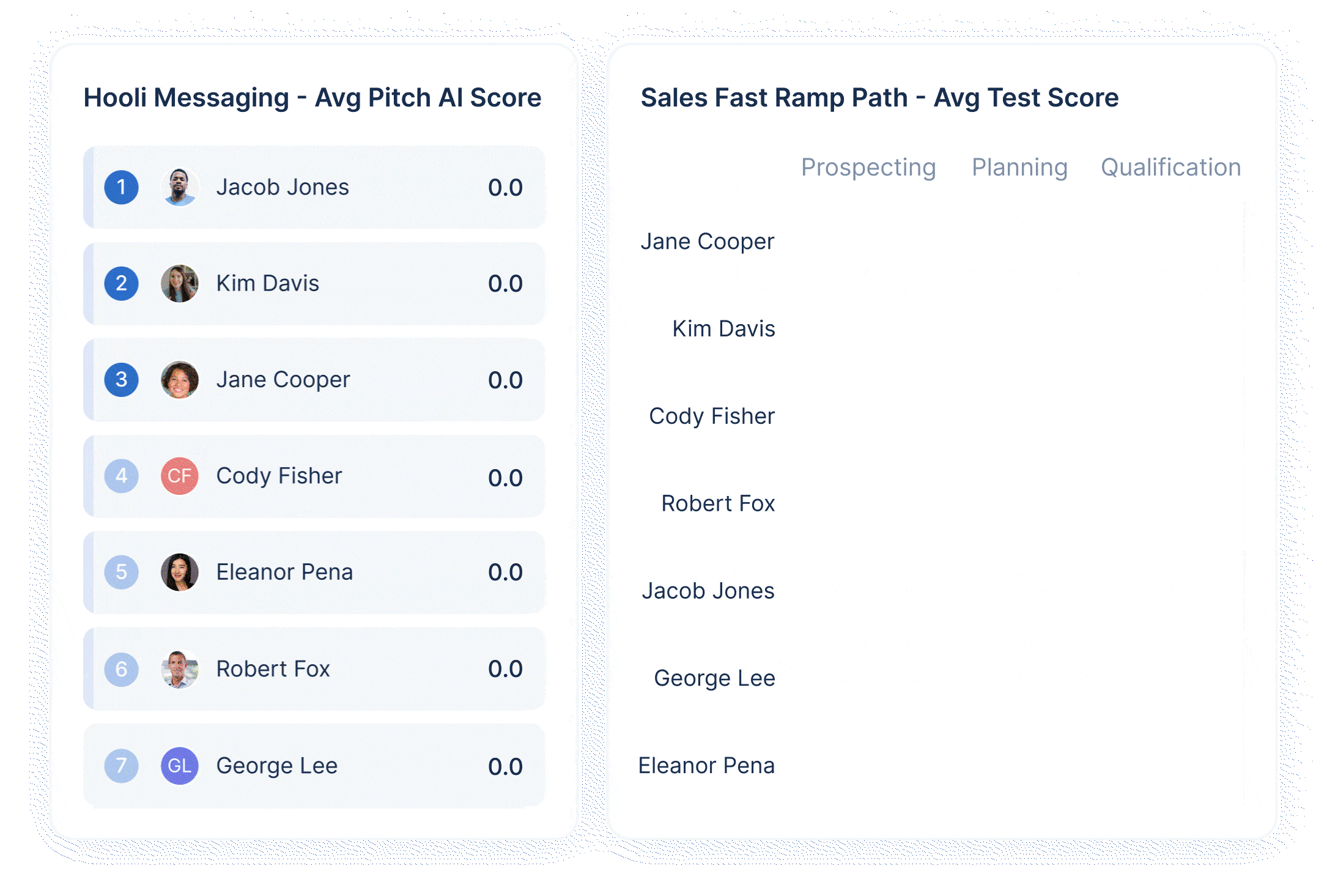
6. Customer-Centric Metrics
- Customer Satisfaction (CSAT) Scores: Measure how well sales reps meet customer needs, indicating the alignment between enablement and buyer experience.
- Customer Retention Rates: Evaluate whether improved sales alignment results in stronger long-term customer relationships.
7. Performance Insights
- Leverage analytics platforms to gain insights into the correlation between enablement initiatives and sales outcomes. Platforms like SalesHood can provide granular data on training completion, content engagement, and deal progression tied directly to enablement activities.
By focusing on these metrics, organizations can clearly link sales enablement initiatives to tangible business outcomes, demonstrating ROI and identifying areas for improvement.
Leading and lagging sales performance indicators should be systematically reviewed and assessed. Sometimes, it’s too late to just look at quota attainment and closed deals. Activities like emails, calls meetings scheduled and pipeline created are great leading indicators to measure and coach. Leading indicators provide insights into what’s working and what’s not working. Measuring impact doesn’t have to be complicated. With our sales enablement software, you can easily track leading vs lagging indicators and run correlation reports that quickly and accurately measure and visualize the impact of implementing sales enablement best practices.
Introducing new processes or tools often meets resistance from sales teams accustomed to existing ways of working. Driving cultural change and fostering buy-in across the organization is an ongoing challenge. Addressing these challenges requires a combination of innovative technology, strong leadership support, and a customer-centric approach to enablement. Solutions like AI-driven coaching, streamlined content activation, and mutual action plans can help overcome many of these barriers.
Sales Enablement Use Cases and Case Studies
Sales enablement isn’t just a concept—it’s a proven strategy that drives measurable outcomes across industries. Here are real-world examples of how companies leverage SalesHood to streamline processes, improve efficiency, and boost revenue:
1. Doubling Selling Price and Shortening Sales Cycles: StarComplianceStarCompliance implemented SalesHood’s platform to transform their sales training and coaching processes. By aligning their teams on consistent messaging and empowering them with tailored enablement resources, they achieved:
2. Scaling Training, Onboarding, and Messaging Alignment: CopadoCopado, a leader in DevOps for Salesforce, utilized SalesHood to unify their global go-to-market teams. With tools for collaborative learning, process consistency, and content management, they saw:
3. Improving Lead Conversion with Digital Sales Rooms: DataEndureDataEndure integrated SalesHood’s Digital Sales Rooms to enhance buyer engagement and accelerate decision-making. The result? A 60% increase in lead-to-opportunity conversion, driven by personalized experiences and seamless communication with potential buyers. 4. Accelerating Onboarding for New HiresSales enablement platforms streamline the onboarding process by delivering interactive learning experiences. For example, a SalesHood customer reduced onboarding times by over 30%, enabling new hires to contribute to pipeline and quota faster. With just-in-time learning and GenAI Coaches, new sales reps build confidence and competence more quickly. 5. Driving Buyer Engagement Through Digital Sales RoomsDigital Sales Rooms (DSRs) like those offered by SalesHood provide a centralized hub for collaboration between buyers and sellers. DataEndure leveraged DSRs to offer personalized content and facilitate seamless communication, resulting in a 60% improvement in lead-to-opportunity conversion rates. 6. Enabling Solution Selling in Complex B2B SalesMany of SalesHood’s customers utilize its tools to train sales reps on value-based selling techniques, crucial in long sales cycles involving multiple stakeholders. The platform empowers sellers with curated content and real-time coaching, boosting win rates in competitive scenarios. Mutual Action Plans (MAPs) keep sellers and buyers aligned throughout the process, improving transparency and accelerating decisions. SalesHood’s performance insights help managers track adherence to sales methodologies like MEDDICC, enabling data-driven forecasting and early risk identification. 7. Providing Sales Teams with Contextual ContentSales enablement helps teams access the right content at the right time. For example, a software company used SalesHood to deliver tailored pitch decks and case studies to sellers within seconds, enabling them to respond to prospect needs more effectively and close deals faster. 8. Enhancing Partner EnablementCompanies with channel or reseller networks use enablement tools to train and certify partners. SalesHood empowers partners by providing tools, content, and training to sell more effectively. Through AI-driven insights, adaptive learning, and easy access to resources, partners stay up to date on product updates, industry trends, and best practices. Customizable sales materials, interactive playbooks, and real-time collaboration tools help partners engage buyers with the right messaging. Embedded analytics enable businesses to track partner performance, optimize strategies, and provide targeted support—ultimately driving increased revenue and stronger partner relationships. |
SalesHood offers functionality to create partner-specific resources, ensuring channel sellers are well-equipped to represent the brand and close deals.
Sales Enablement vs. Revenue Enablement: What’s the Difference?
Sales enablement focuses on helping sales teams sell more effectively. It provides sellers with the tools, content, training, and coaching they need to engage buyers, overcome objections, and close deals. Traditional sales enablement programs prioritize onboarding, messaging alignment, playbooks, and real-time deal support. The core mission is to boost individual and team performance, making the sales process more consistent and productive.
Revenue enablement, by contrast, takes a broader and more strategic view. Instead of focusing solely on the sales team, it aligns all go-to-market functions—marketing, customer success, sales engineering, product, and even partners—to create a unified buyer experience. Revenue enablement supports the full customer lifecycle: from acquisition to onboarding, adoption, expansion, and renewal. It leverages shared metrics, integrated content strategies, and cross-functional collaboration to maximize long-term customer value.
|
In short:
|
As organizations shift toward buyer-centric, recurring-revenue models, revenue enablement reflects the next evolution of enablement strategy.
Sales Enablement vs. Sales Operations: Where’s the Line?
Sales operations manages the systems and structures that support selling—think: quotas, territories, tech stacks, pipeline analytics, compensation plans, and process design. It’s a function built to optimize efficiency and execution.
Sales enablement, meanwhile, exists to empower people. It equips reps with the knowledge, content, and coaching they need to deliver compelling buyer experiences. Where sales ops focuses on internal mechanics, sales enablement bridges the gap between buyer needs and sales execution—helping reps speak the right language at the right time.
Quick comparison:
Sales Ops = Operational efficiency (systems, data, processes).
Sales Enablement = Human effectiveness (training, messaging, buyer engagement).
The difference is subtle but powerful. Sales enablement helps salespeople connect with real humans—buyers—with confidence and clarity.
The Revenue Enablement Maturity Model: A Roadmap for Growth
As revenue enablement becomes a strategic priority, teams need a clear path to evolve. That’s where the SalesHood Revenue Enablement Maturity Model comes in. Based on years of working with top-performing go-to-market teams, this model provides a step-by-step framework for scaling enablement programs—from foundational execution to enterprise-wide transformation.
The model outlines four stages of maturity, each building on the last. At every stage, teams strengthen alignment, improve process consistency, and expand impact across the entire customer journey. Whether you’re just getting started or looking to scale, this framework offers a proven path to driving measurable revenue outcomes.
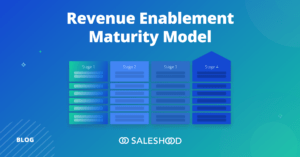 |
AI Use Cases in Sales Enablement
AI capabilities help revenue teams execute a more efficient and effective customer journey. Across all components of our revenue enablement platform, from onboarding and readiness to content creation and curation to prospect engagement, you can use AI to drive faster ramp times, conversational confidence, and consistent messaging.
On the readiness front, AI helps certify reps faster and get them conversationally competent, no matter where they are. For content, AI assists in creating, downloading, and curating content to make it easily accessible to sales teams. When reps are engaging prospects, AI automatically creates call recaps, helps reps present themselves consistently, and adds descriptions to shared content.
AI contributes to driving a more consistent and efficient customer journey by helping reps be more productive and effective. While some editing may still be needed with AI-generated content, it saves significant time by doing much of the heavy lifting that reps would otherwise have to do manually.
AI helps tie together the trifecta of readiness, content governance, and prospect engagement in sales enablement. It makes each part of the platform more efficient and will increasingly help link the pieces together in meaningful ways.
For example, AI can help proactively recommend the right content for reps to add to their client sites during prospect engagement. It can also eventually feed learnings from rep interactions back to enablement teams to inform future training.
AI is becoming critical as enablement teams shrink and are expected to do more with less resources. Features like AI Coach allow companies to rely more on the AI for certifying and coaching reps. Without AI, many overwhelmed enablement teams will get left behind.
Today’s sales enablement leaders are pioneers in defining sales enablement. They are all revenue multipliers making huge impacts at their companies and in the industry. Check out our AI “Movers and Shakers.” Witnessing this revolutionary shift, many of our customers embarked on pioneering initiatives integrating AI into their sales coaching and sales execution programs with remarkable enthusiasm and impact.
Following a thorough analysis of AI usage and performance data, we identified go-to-market leaders distinguished for their execution of groundbreaking sales enablement initiatives, harnessing the power of SalesHood’s cutting-edge AI technology. Our cohort of AI innovators spearheaded numerous real-world AI sales coaching and sales execution use cases within their revenue teams, yielding substantial increases in sales productivity. Their strategic deployment encompassed a wide variety of AI programs, including pitch practice, objection handling, deal coaching, meeting effectiveness and many other use cases – all powered by SalesHood’s AI Coach.
AI Coaching at Copado
The key question Copado faced was how to use AI to be more efficient and deliver what their field needs when they need it. They wanted to move from passive learning, such as watching videos and reviewing slide decks, to active participation where reps could practice skills and get instant feedback.
With SalesHood’s AI Coach, Copado’s reps can now practice and get feedback in minutes, rather than waiting days for manager input. This has fundamentally shifted their approach to enablement, allowing for smaller, bite-sized learning spread out over time. Reps find it easier to consume and actively engage, instead of just reading or zoning out during a video.
By doing active learning much earlier in the process, Copado’s reps get better at their skills sooner, leading to increased efficiency. A prime example of this was preparing for Dreamforce. Copado had seasoned product people, sales reps, and SDRs with varying levels of experience all conversation-ready. Watch the short two highlights video or click to watch the full interview.
The Future of Artificial General Intelligence (AGI) and Sales Enablement
The future of sales enablement, from SalesHood’s perspective, lies in blending human ingenuity with advanced technology, particularly leveraging Artificial General Intelligence (AGI), to create a more effective, scalable, and insightful sales ecosystem. Here’s a vision for how this unfolds:
1. AI-Driven Personalization at Scale
AGI enables a deeper understanding of individual sales reps’ strengths, challenges, and learning styles. With SalesHood’s solutions, this could translate into tailored coaching programs, just-in-time content recommendations, and automated feedback loops that adapt dynamically to each salesperson’s needs.
2. Seamless Buyer-Seller Alignment
SalesHood’s Mutual Action Plans (MAPs) already drive alignment, but AGI will enhance this by predicting and addressing potential friction points in the buyer journey. It will act as a proactive partner, guiding sales teams to foster stronger, trust-based relationships with buyers.
3. Predictive Sales Insights
AGI will take SalesHood’s Performance Insights to the next level by analyzing complex datasets across customer interactions, sales behaviors, and market trends. This will help organizations predict deal outcomes, identify revenue opportunities, and allocate resources more effectively.
4. Automated and Insightful Content Activation
AGI can transform how sales teams interact with content. Instead of searching for materials, sales reps will receive real-time recommendations based on buyer behavior, engagement signals, and deal context, ensuring the right message is delivered at the perfect moment.
5. Continuous Enablement Through AGI Coaches
SalesHood’s AI Coaches, powered by AGI, will evolve into highly intuitive partners that not only train but also mentor and provide emotional intelligence support. These coaches will simulate real-world selling scenarios, giving sales reps hands-on practice and instant, actionable feedback.
6. Enhanced Collaboration Between Sales and Marketing
AGI will bridge gaps between sales and marketing by analyzing the performance of sales content in unprecedented detail. This ensures that every piece of content created delivers measurable impact, fostering alignment across go-to-market teams.
7. Scalable Sales Execution
With AGI, SalesHood will enable companies to replicate top-performing behaviors across their entire organization. AGI will analyze patterns from high-performing reps, democratize best practices, and ensure consistency in execution across teams and regions.
SalesHood’s vision embraces AGI as a co-pilot for sales teams, enabling them to close deals faster, deliver predictable revenue outcomes, and foster long-term customer relationships. It’s not just about automating tasks; it’s about empowering salespeople to focus on what they do best—building connections and delivering value—while AGI handles the rest.
How to Structure Your Sales Enablement Team
Designing an effective sales enablement team is essential for scaling impact and driving consistent sales performance. A well-structured team ensures alignment, clarity, and operational efficiency across your go-to-market efforts.
Best practices for building your sales enablement organization:
-
Define clear roles and responsibilities. Avoid duplication and ensure each team member has a distinct area of ownership, whether it’s onboarding, coaching, content, or technology.
-
Maintain an optimal team ratio. Aim for a 1:10 to 1:15 ratio of enablement professionals to sales reps to deliver meaningful impact without overextending the team.
-
Balance strategy, content, and technology. Ensure your team is equipped to drive high-level initiatives, develop impactful content, and manage enablement platforms effectively.
-
Promote cross-functional alignment. Foster tight collaboration between sales, marketing, product, and customer success to ensure messaging and training are unified and relevant.
-
Use automation and AI to scale. Leverage technology to streamline repetitive tasks, personalize coaching, and surface the right content at the right time.
-
Measure what matters. Track performance metrics like ramp time, win rates, and content usage to continuously optimize enablement efforts.
Read: Sales Enablement Organizational Structure: Ownership, Reporting, and Ratios
Why Marketing Should Care About Sales Enablement
CMOs and product marketers should care about sales enablement because it aligns marketing efforts with sales outcomes, ensuring that marketing’s contributions drive tangible revenue impact. Sales enablement provides the tools, training, and resources sales teams need to engage buyers effectively, close deals faster, and maintain consistent messaging across the buyer journey. It acts as the bridge between marketing creativity and sales execution, enhancing the ROI of marketing efforts by making them actionable and effective for sales teams.
Getting Started with Sales Enablement
Sales Enablement is an organizational mindset and commitment to readiness and excellence, starting with the CEO and touching every employee in your company: sales, marketing, business development, partners, engineering, support, human resources, leadership team, etc. A high-impact sales enablement strategy brings departments and leaders together around shared priorities, performance metrics, and expectations and is powered by the right sales enablement platform; book a demo to see SalesHood in action.
We invite you to watch this 2-minute video outlining the Enablement Mastery book and offering more insight the benefits of sales enablement. Take SalesHood’s free, Enablement Mastery course for a more comprehensive understanding of how to master revenue enablement. Enablement practitioners love the course. “Such a great course and opportunity to connect with sales enablement peers. Elay Cohen and the entire team at SalesHood is really committed to supporting our efforts in the field. If you can, you’d be crazy not to take the course.” Giorgia Ortiz, VP Enablement.
Summary
Beware of checkbox enablement. With the explosive popularity, many sales enablement platforms were created with too much of a focus on completing certifications or ticking check-boxes rather than true skills learning and training. For your sales enablement process to be successful, your teams need to engage and learn from each other – consistently, preferably daily. If your sales enablement platform is not driving interaction, modeling, and pitch practice it will not help your team.
Sales enablement is the strategic process of equipping sales teams with the tools, training, and resources needed to engage buyers effectively and close deals efficiently. By aligning content, coaching, and technology with business goals, organizations can drive consistent revenue growth and enhance buyer experiences. Ready to transform your sales team’s performance? Explore how SalesHood can help today!
Key Sales Enablement Terms and Concepts
To wrap up, here’s a glossary of essential sales enablement terms. Whether you’re building a program from scratch or refining a mature operation, these concepts are foundational to understanding and executing effective enablement.
Sales Training
Sales training is a core pillar of enablement, designed to equip reps with the skills and knowledge to succeed. Modern training must be continuous, modular, and accessible—delivered in short, digestible formats through an enablement platform. Examples include:
-
Role-playing scenarios
-
On-demand video lessons
-
Email and call scripts
Sales Coaching
Ongoing coaching helps reinforce training and drive behavioral change. Effective coaching includes structured frameworks, feedback loops, and performance tracking. Tools like Sales Coaching Huddles in SalesHood streamline this process, helping managers deliver consistent and impactful coaching.
Sales Coaching Assessments
Regular assessments allow leaders to track individual rep progress, identify coaching effectiveness, and drive accountability. Data-backed coaching leads to more consistent outcomes and better ramp time.
Sales Effectiveness
Sales effectiveness measures how well your team performs—typically tracked through win rates, quota attainment, and pipeline coverage. Enablement’s role is to improve these metrics through strategic programs and targeted support.
Digital Sales Rooms (DSRs)
DSRs are virtual, buyer-facing workspaces where sellers and buyers collaborate, share content, and track engagement. They streamline the buying process and enhance buyer experience.
Micro-Learning
Micro-learning delivers short, focused training modules that help reps build skills on-demand—ideal for busy schedules and reinforcing knowledge retention.
Peer-to-Peer Learning
Sales teams learn best from each other. Peer-to-peer learning encourages knowledge sharing, best practice exchange, and team-wide improvement.
Sales Content
Sales content includes everything reps need to move deals forward—from case studies and ROI calculators to battlecards and presentations. The key is surfacing the right content at the right time.
Think of your content library like a professional kitchen—well-organized, intuitive, and ready when you need it most.
Customer Relationship Management (CRM)
A CRM tracks all customer interactions and pipeline data. An effective CRM integrates with your enablement platform, ensuring alignment across sales, marketing, and customer success.
Content Management System (CMS)
A CMS centralizes your sales content, making it easy to organize, access, and share. While typically a marketing tool, it plays a vital role in enablement by delivering on-message content where and when it’s needed.
Sales Enablement Programs
A strong enablement program accelerates onboarding, improves productivity, and reinforces learning. However, ineffective programs often suffer from:
-
Lack of executive buy-in
-
Disconnected tools and processes
-
One-size-fits-all content
-
Poor manager involvement
-
Inability to measure impact
Great enablement programs prioritize personalization, alignment, measurement, and scalability.
Final Thoughts
Sales enablement isn’t just about tools—it’s about mindset. Foster open dialogue across your organization to align on what enablement means, how it supports sales goals, and what a successful experience looks like. When your teams feel heard, empowered, and aligned, enablement becomes a powerful driver of revenue and growth.
